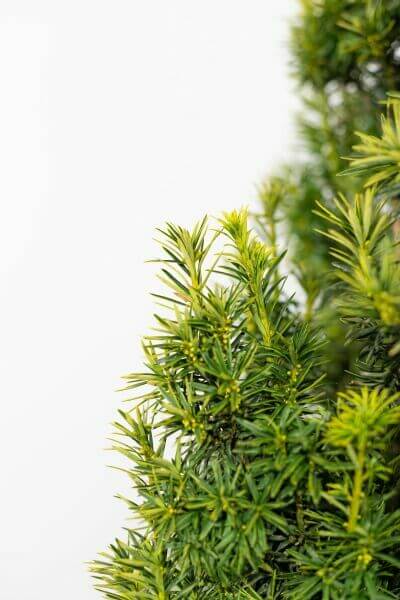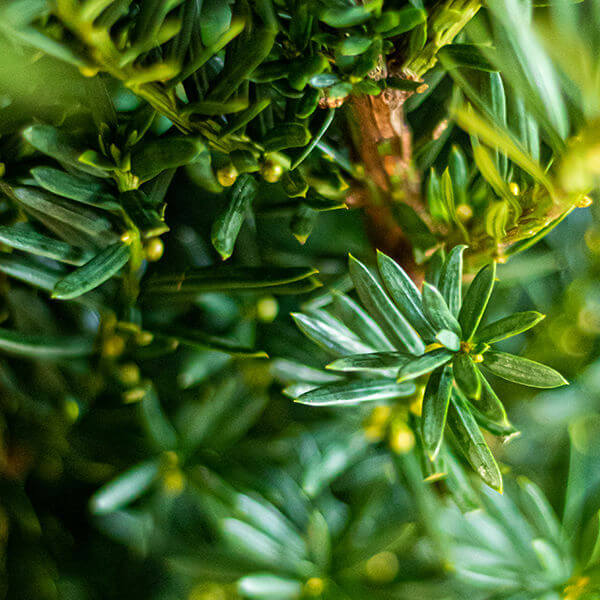Hedge Plants For Noise Reduction
Hedge Plants For Noise Reduction
Blog Article
Best Hedging Plants For Industrial Sites
Improve your garden's attraction with rich hedge ranges such as Yew (Taxus), Thuja, Laurel, Photinia, and Bamboo, celebrated for their structural stability and environmental advantages.
Yew and Thuja provide evergreen coverage and winter season durability, while Laurel uses rapid development and broad, aromatic leaves.
Photinia adds seasonal appeal with its lively red foliage, and Bamboo lends a low-maintenance, peaceful atmosphere.
These hedges improve air quality, minimize sound, and create tranquil, private areas.
Proper planting, spacing, and maintenance guarantee energetic development and eco-friendly harmony.
Explore how these lush varieties can raise your garden's beauty and well-being.
Secret Takeaways
Change Your Garden With Lush Hedge Varieties
- Select Yew for its dense, evergreen development and unrivaled longevity.
- Opt for Laurel for its fast growth and broad leaves, making sure quick privacy.
- Select Photinia for its lively seasonal foliage, which turns a striking dark red.
- Make use of Bamboo for a low-maintenance, winter-hardy hedge with aesthetic appeal.
- Space plants 2-3 per meter and prune regularly for optimal growth and health.
Popular Hedge Plants
When transforming a garden with lush hedge varieties, it's important to think about popular hedge plants such as Yew, Thuja, Laurel, and Photinia due to their special attributes and benefits.
Yew (Taxus) is extremely respected for its durability and thick, green development, making it a prime option for withstanding landscapes.
Thuja is noted for its evergreen foliage and robust winter durability.
Photinia adds seasonal vibrancy with red leaves that darken in time, developing vibrant visual appeal.
Laurel uses quick development and aromatic, broad leaves, perfect for fast personal privacy.
Furthermore, Bamboo is an exceptional option for ambiance, offering a low-maintenance, winter-hardy option that boosts the garden's visual with its sophisticated, swaying canes.
These choices deal with a range of horticultural needs and preferences.
Advantages of Garden Hedges
Garden hedges provide a wide variety of benefits, making them a valuable addition to any landscape. These natural barriers are economical to execute and provide substantial wind security, boosting air circulation and adding to sound reduction. The dense foliage of hedges like Thuja and Beech makes sure privacy by obstructing exposure, producing a remote and serene environment.
Hedges likewise play an essential role in microclimate policy, providing a steady environment that promotes plant development and lessens temperature variations. Their elaborate leaf structures filter toxins, improving air quality and adding to a healthier garden environment.
Moreover, hedges master noise decrease, taking in and deflecting acoustic waves to lower ambient noise levels. This double functionality of supplying both visual and acoustic personal privacy enhances the total tranquility and visual appeal of any garden.
Planting and Maintenance Tips
For a successful hedge, careful preparation of the planting area is important. Make sure the soil has proper pH and drain to support strong root advancement.
Space the plants properly for the chosen types. Water the hedge frequently during its preliminary development stage, adjusting as required with seasonal modifications.
Implement a methodical bug control and disease prevention strategy, using natural or chemical treatments when required. Routinely check for aphids, termites, and fungal infections.
Apply mulch to retain wetness and suppress weeds. Seasonal pruning promotes thick development and air blood circulation, essential for plant health.
Following these guidelines will assist you cultivate a lively, well-maintained hedge that enhances the charm of your garden.
Spacing and Trimming Standards
Spacing and Cutting Standards
Appropriate spacing and cutting are important for cultivating healthy, aesthetically appealing hedges. Adequate spacing ensures each plant gets sufficient nutrients, light, and airflow.
Follow these guidelines for optimal hedge maintenance:
- Spacing: Position hedge plants 2-3 plants per meter to encourage robust growth.
- Pruning Techniques: Regular pruning is important for keeping desired hedge height and shape. Trim new growth in summer and cut back older wood during winter season.
- Seasonal Care: Change cutting schedules and techniques according to seasonal requirements to guarantee plant health.
- Hedge Height: Regularly screen and trim to preserve the desired hedge height and achieve consistent looks.
Sticking to these steps will ensure your hedge thrives, enhancing both the appeal and performance of your garden.
Selecting the Right Hedge
Choosing the Right Hedge
Selecting the proper hedge includes evaluating factors such as fully grown height, foliage density, and ecological strength. Successful hedge plant selection needs comprehending each species' growth characteristics and site-specific flexibility.
For instance, Yew (Taxus) provides exceptional longevity and dense development, while Thuja is notable for its winter season resilience. In addition, considering upkeep requirements is important; fast-growing species like Laurel or Privet demand routine trimming, whereas low-maintenance alternatives like Bamboo or Ivy might be more effective for those seeking very little upkeep.
Ecological factors such as soil type, light schedule, and moisture conditions must likewise direct the choice procedure. This cautious technique ensures the selected hedges will thrive, offering both visual and functional benefits to the garden landscape.
Shipment and Planting Advice
To guarantee your hedge plants grow, they ought to be provided by specialized couriers and planted immediately upon arrival.
Follow these essential steps for effective planting:
- Soil Preparation: Improve the soil with raw material to enhance drain and nutrient material.
- Planting Depth: Create a trench twice the width and equivalent to the depth of the root ball.
- Watering Strategies: Water thoroughly after planting, keeping the soil consistently wet however not filled.
- Mulching: Apply a layer of mulch to retain moisture and reduce weeds.
Consumer Assistance and Service
Offered the crucial role of timely support in horticultural pursuits, our customer support team is offered six days a week through telephone, e-mail, and social media to provide professional suggestions and promptly address any concerns. Their dedication to fast reaction times guarantees consumer satisfaction by resolving queries related to plant health, optimal planting methods, and maintenance schedules.

-------------------
Within 24 hr
Social network
This detailed assistance system, reinforced by a stellar 9.3/ 10 client score, highlights our dedication to improving the gardening experience for every single customer.
Regularly Asked Concerns
The Length Of Time Does It Take for Hedge Plants to Develop?
Hedge plants typically need one to 3 years to end up being totally developed, with the specific period differing by types and growing conditions.
Reliable more info care throughout this vital period is important for robust growth. Consistent watering, vigilant weed control, and appropriate fertilizer application are pivotal in promoting strong root development.
For instance, fast-growing types like Laurel might establish faster, while slower-growing varieties such as Yew may take longer. Thorough upkeep accelerates the establishment process, leading to healthy and dense hedges.
What Are the very best Hedge Plants for Privacy?
The concern of the very best hedge plants for personal privacy involves evaluating evergreen and deciduous alternatives.
Evergreen hedges like Thuja, Laurel, and Cypress supply year-round protection, ensuring continuous personal privacy.
In contrast, deciduous hedges such as Beech offer seasonal personal privacy, shedding leaves in chillier months.
Secret maintenance ideas for privacy hedges consist of routine trimming, fertilizing in spring, and appropriate spacing-- generally 2 to 3 plants per meter.
Additionally, constant watering and persistent weed removal are vital for promoting healthy, dense growth.
Can Hedge Plants Draw In Wildlife to My Garden?
Yes, hedge plants can attract wildlife to your garden by supplying vital advantages like shelter, food, and nesting sites, thereby enhancing local biodiversity. For example, yew, holly, and laurel are excellent for bring in birds, while ivy supports a variety of pests.
Nevertheless, it is necessary to note that there are some drawbacks, such as increased upkeep to manage bugs and regular maintenance. Carefully picking and preserving hedge ranges can help stabilize these downsides and benefits, eventually promoting a sustainable and dynamic environment in your garden.
Are There Any Flowering Hedge Plants Available?
Yes, there are flowering hedge plants readily available that can enhance the charm of your garden.
For instance, Elaeagnus, also referred to as Olive Willow, produces aromatic white flowers in the fall, including a touch of elegance.
Photinia, another popular choice, showcases lively red leaves that develop into an abundant green, creating a dynamic visual impact throughout the seasons.
To make sure these plants thrive, it's important to practice correct pruning techniques and seasonal upkeep, such as trimming new development in the summer season and cutting back in the winter.
These steps will help preserve the health and visual appeal of your blooming hedges.
How Do I Avoid Bugs in My Hedge Plants?
To avoid bugs in hedge plants, use natural bug control approaches and maintain proper hedge care. Introduce helpful insects like ladybugs, which prey on harmful pests, to create a balanced ecosystem.
Regularly inspect your hedges for indications of problem and immediately eliminate any affected parts to prevent the spread. Ensure the health of your hedges by applying balanced fertilizers and providing appropriate water.
Make use of mulching to maintain soil wetness and proper spacing to reduce plant stress and promote robust development. These practices jointly help in reducing pest issues and keeping a healthy hedge.
Conclusion
In essence, picking the best hedge varieties such as Yew, Thuja, and Laurel can transform any garden into a tranquil sanctuary. These plants offer year-round greenery, boost visual appeal, and offer practical advantages like noise reduction and wind protection.
Correct planting strategies, precise spacing, consistent watering, and seasonal trimming are vital for optimal development.
Reliable shipment services and skilled client assistance guarantee a seamless experience from purchase to planting, making it simpler than ever to raise your outside area.
Garden hedges provide a wide range of benefits, making them an important addition to any landscape. These natural barriers are economical to execute and provide substantial wind security, enhancing air blood circulation and contributing to noise decrease. The thick foliage of hedges like Thuja and Beech ensures personal privacy by blocking visibility, developing a secluded and tranquil environment.

Pruning Techniques: Regular pruning is essential for maintaining wanted hedge height and shape. Cut brand-new growth in summertime and cut back older wood during winter season.
Report this page